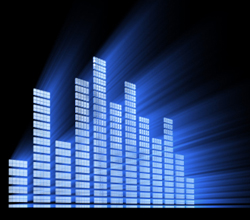So what is happening when we put a sound system in a church or in any enclosed room?
Why is the sound sometimes clear in one part of the church but only a few seats away we can hardly hear anything at all while another few seats down it is very loud, or if we hear we cannot understand what is being said?
Why is it when the speakers were brought in and demonstrated on stands they sounded great on the demo music that was played, but when they were hung up higher and installed, the spoken word just is not easy to understand?
The Enemy
When we speak outdoors or hear a loudspeaker outside, the sound is allowed to travel free in any direction. As soon as we put walls around a sound system, the sound starts to bounce off one wall and then to another wall, and so on.
Cancellation and acoustic amplification at certain frequencies can occur. Therefore, much care has to be taken with how the walls are placed, the size of all the structures, what they are made of, the position of the congregation of the church, and so on.
We do not want a church to sound “acoustically” dead for either speech or music. We want a little “warmth” or reverb (not to be confused with echo) but too much can affect speech intelligibility.
Some of the bad things that can happen are:
- Too much reverb smearing the speech.
- If the width, height and length of the room are divisible by the same number, then “standing waves” result. These cause a cancellation of frequencies at a certain area of a room. You may hear everything perfectly where you are sitting but two seats down the pew you can barely hear at all.
- Feedback is that horrible loud squealing sound that can come from your loudspeakers. This occurs when the sound from your speakers re-enters your microphone. Feedback “modes” are very narrow and can be numerous in a church with poor acoustics. They usually occur between 50 Hz and 2500 Hz.
- The room “rings.” This is different from feedback. What you hear is a tone-like or ringing sound that seems to be added to almost every word. What is happening is one or more of the frequencies from the loudspeaker are exciting the physical architecture of the room itself. Ring “modes,” like feedback modes are also very narrow but different as they do not have the phase characteristics to cause the system to self-oscillate (or feedback).
Fixing It
You may say to yourself, “well we’ll get an architect to design the church and that will solve all our problems.” However if the church does not also retain an acoustic consultant at the same stage as the hiring of the architect, trouble could result. Be aware that the architect usually hires the acoustic consultant.
As a result there are far too many cases where his advice was not taken and fundamental acoustic treatment and high quality audio components were left out in lieu of solid brass door knobs, exotic wood furnishings, etc.
A lot of designs may look good but if your walls are flat and parallel, worse yet, made out of glass, the room could simultaneously be an architectural splendor and acoustic hell.
Some of the most gorgeous and famous “modern” churches seem to be getting a new sound system every other year (and will continue to do so until the architecture is corrected).




















